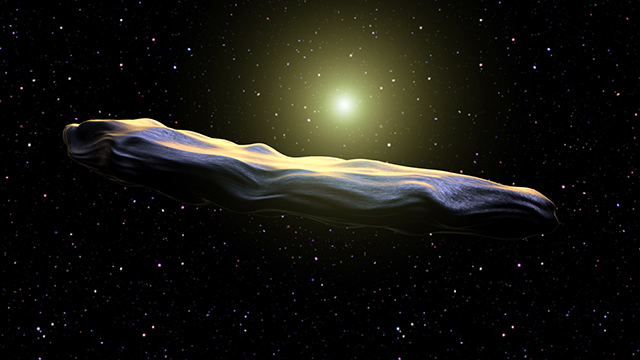
A physicist from Harvard University is seeking to prove that a meteorite that fell to Earth is actually an alien probe.
Some say aliens use probes to examine eyes, noses, mouths and most organic parts of the human body. Others say probes might be used by aliens to make humans spawn alien-human hybrids.
Harvard physicist Avi Loeb, dubbed as the world's top alien hunter, is planning a $1.5 million-expedition to Papua New Guinea. He and his team plan to look for fragments of the CNEOS1 2014-01-08 meteorite, which landed just off the coast of the Pacific nation in 2014. There appears to be solid evidence that the meteorite measuring half a meter wide came from outside the solar system.
"This meteor is the first near-Earth object ever detected by humans from outside the solar system," Loeb wrote. "Within a couple of months, I will be leading an expedition to collect the fragments of the first interstellar meteor."
According to the physicist, CNEOS1 2014-01-08 – which is made up of a very hard material – may not be a meteorite at all. It appears that the NEO is made of a super-strong material never seen before, such as a rare metal formed in the hearts of neutron stars.
Loeb and his team seek to examine a square kilometer (km) of ocean floor almost two km underwater to find the meteorite's fragments. They plan to use an assortment of custom sand sifters, magnets and huge sieves to look for meteorite fragments for two weeks.
While the fragments that may be recovered from the ocean floor are just a few millimeters in size, Loeb said these could turn out to be "technological" and serve as strong proof of alien existence.
"We have a boat. We have a dream team, including some of the most experienced and qualified professionals in ocean expeditions. We have complete design and manufacturing plans for the required sled, magnets, collection nets and mass spectrometer. And, most importantly, today we received the green light to go ahead," said Loeb, who was pertaining to Port Moresby's approval for the mission.
Loeb used two data sets to determine meteorite's impact zone
Loeb – the co-founder of Harvard's Galileo Project – admitted that it took him and his team eight years to organize the expedition. This is because they had to find out where the meteorite's debris fell, which was difficult to do since no single instrument exactly captured its descent.
But to determine CNEOS1 2014-01-08's impact zone, he had to obtain data from two sets of instruments. The first data set came from U.S. military missile warning satellites that had sensitive infrared sensors. These can also detect meteorites while scanning for missile launches.
Meanwhile, the second set of data came from earthquake sensors. He explained: "We found that the blast wave from the meteor explosion generated a high-quality signal in a seismometer located at Manus Island," which is located in Papua New Guinea's northern region.
Prior to his work with CNEOS1 2014-01-08, Loeb was one of the first scientists to announce that the 'Oumuamua object might be an alien probe. The bright object first spotted in October 2017 streaked across and then out of the solar system. (Related: Harvard astronomer claims alien tech got marooned in the solar system.)
Besides examining strange interstellar objects such as 'Oumuamua, Loeb's Galileo Project is creating humanity's first worldwide network of small telescopes whose principal purpose is to scan the sky for alien craft or the remains of alien craft.
Space.news has more stories about space objects.
Watch this video about Avi Loeb's claim that the 'Oumuamua object proves the existence of life in other parts of the universe.
This video is from The Conspiracy Brief channel on Brighteon.com.
More related stories:
So, we're ALL aliens? New research suggests that DNA molecules were brought to Earth on meteorites.
Winchombe meteorite that crashed on driveway found to contain the building blocks of life.
Sources include:
Please contact us for more information.













